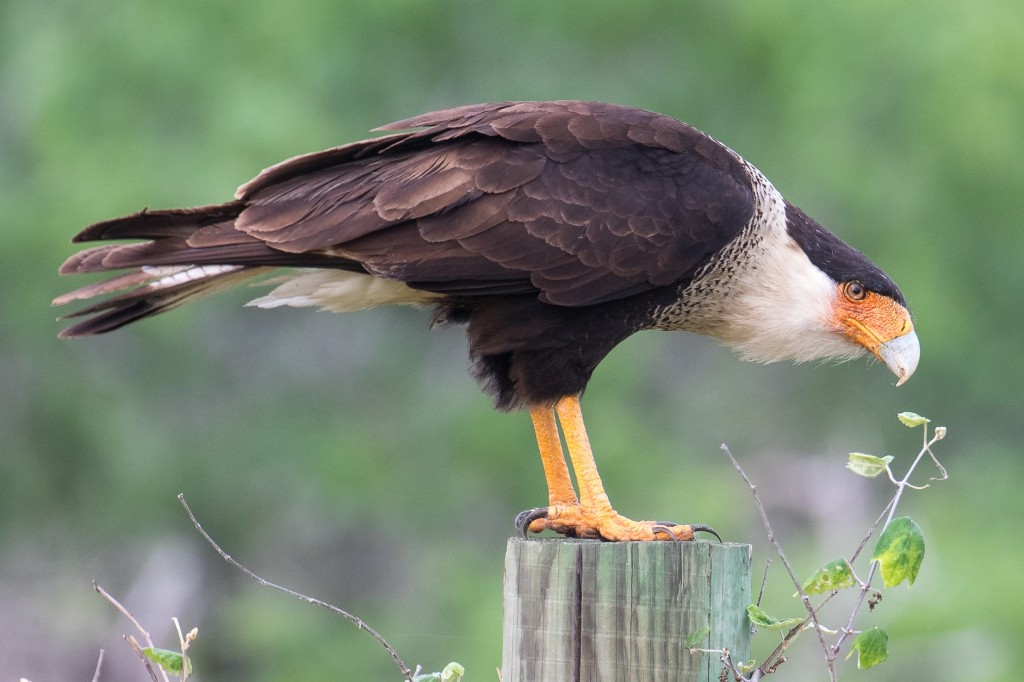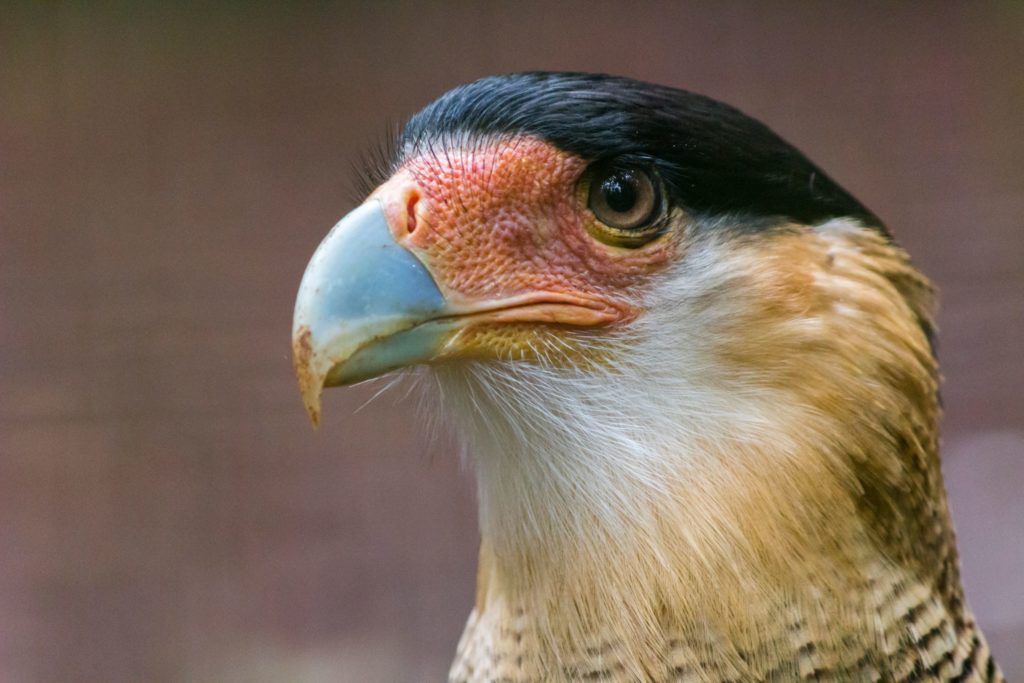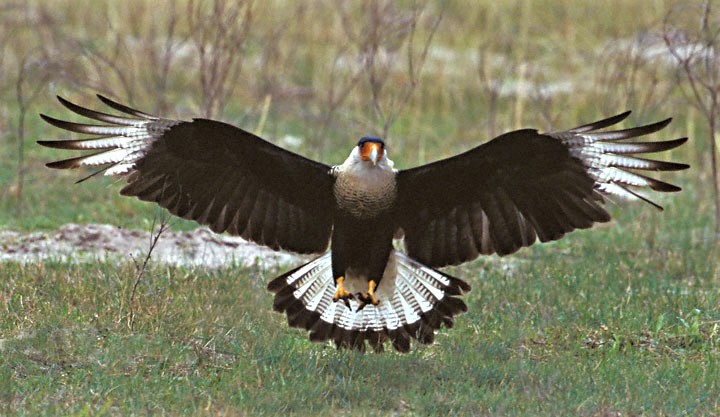Birds: Crested Caracara
Driving across the vast farms and wide plantations of central Florida, we were headed west on the BeeLine Highway, south of Disney World in Orlando. Early morning, we spotted a bird flying about 10 feet off the ground gliding in a flat line. It ever-so-quickly landed on a fence post by the side of the road. It’s flight pattern looked like a falcon, yet its head seemed more colorful and larger, like an eagle. We pulled the car over and I got a good look through my binoculars at the new-to-me bird. Resorting to a bird book, when we arrived at our destination, the bird turned out to be a Crested Caracara.
A member of the Falcon family, we had it partially right, but there were some very distinctive physical features that made the Caracara special: it’s beak, face, eyes, crest, wing markings and talons. This bird was unique, as if designed by a make-up artist from Disney, rather than by the progress of evolution.
Starting with the obvious, the beak was blue, swimming pool blue, which was a first for me. The curved tip looked like the hook of a raptor or osprey. Also the facial feathers were mostly gone, revealing an orange-red-yellow skin tone, reminiscent of a vulture. The feathers were evolutionarily removed to allow these birds of prey to stick their heads into the carcass of their carrion and easily shed any vermin.
And those brown eyes, they seemed to look right through you, as if peering at a family pet cat. The dark crest was not sticking up, at the time, and resembled the slicked back, black hair on a teenager. And the white and rust feathers below the orange-red-yellow face looked like a neck beard on a greying hippie. Visually scanning down the head, it wasn’t until the buff and black bands around the throat and torso of the bird that the growth looked like real feathers.
Another distinctive feature was the falcon’s legs and talons. The legs were yellow-orange, the color of chicken legs, and the talons were dark and menacing. It was easy to imagine whose talons picking up an unsuspecting rodent or fish for its next meal.
The flashiest parts of the bird were the wing tips and tail feathers, which were striped black against the dominant white. The wings and tail were surprisingly flashy for a bird that one might assume wants to sneak up on it’s prey. Not so, this falcon seemed all about “The Show.”
Working in Camas, Washington, with a flashy dressed and brilliant woman named Cara Denver, I once joked that she should be called Caracara, as if saying her name once was not enough. No one else at the firm got the joke, so it died the moment after I said it. Oh well.
Interesting Facts
South of the Border there are stories of folklore and legends about the Caracara. It is sometimes called the Mexican Eagle, though one is more likely to see the bird with other carrion eaters, like the Turkey Vulture, than catching fish, like the Osprey. According to Cornell Labs, the Crested Caracara is the only falcon that collects material to build a nest. Apparently other falcons lay their eggs in old nests made by other species or in a scrape on the ground. [1]
You have to keep your eyes out for this not-so-shy bird, as they often are either at the top of trees on the perimeter or walking on the ground. One may never know when the Crested Caracara will be in full view.
———————————–
[1] https://www.allaboutbirds.org/guide/Crested_Caracara/overview



